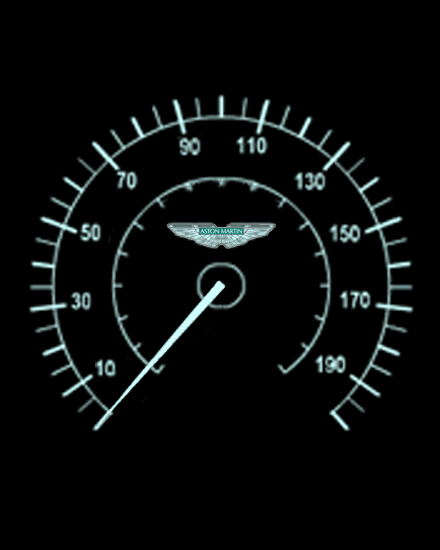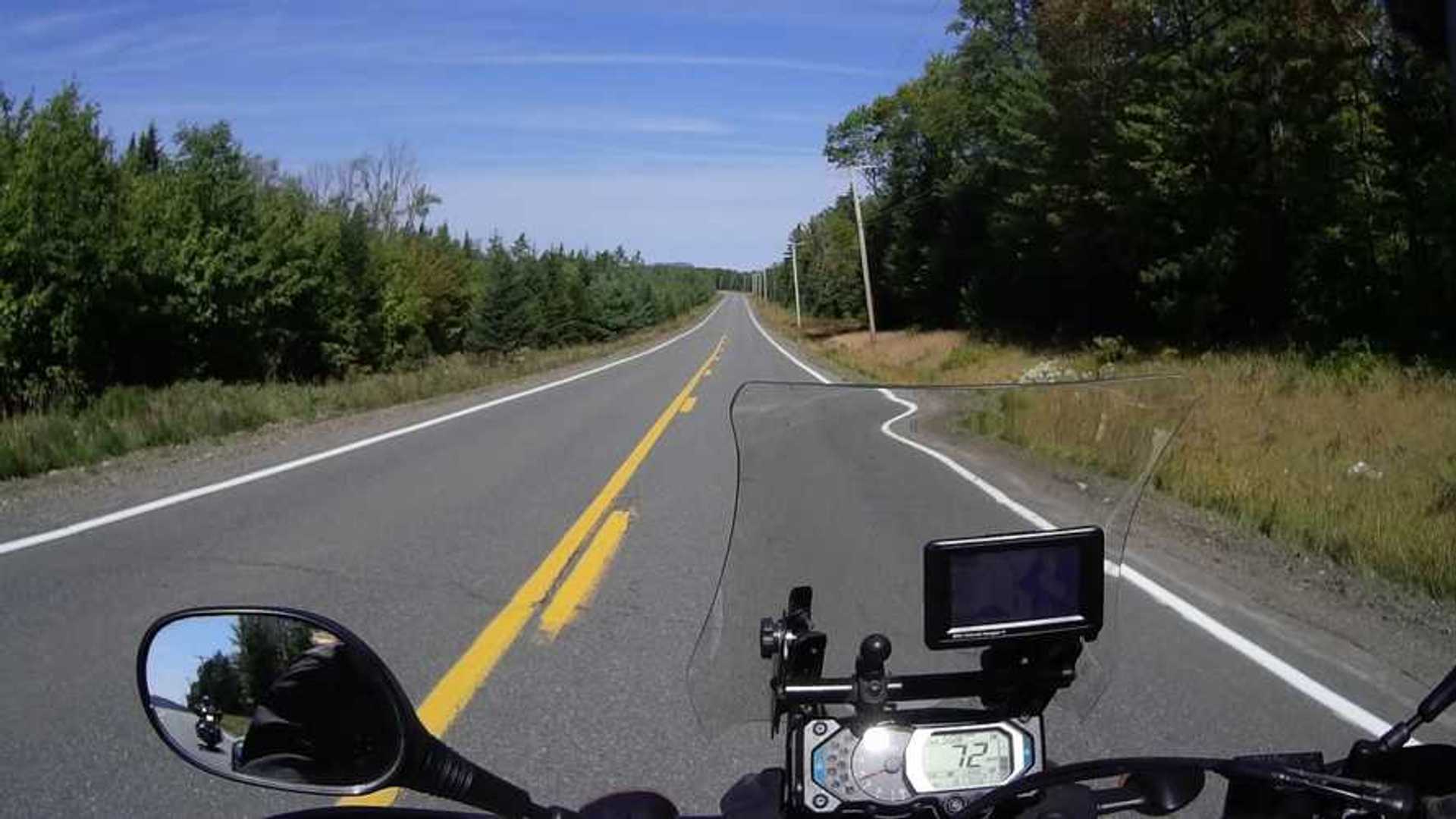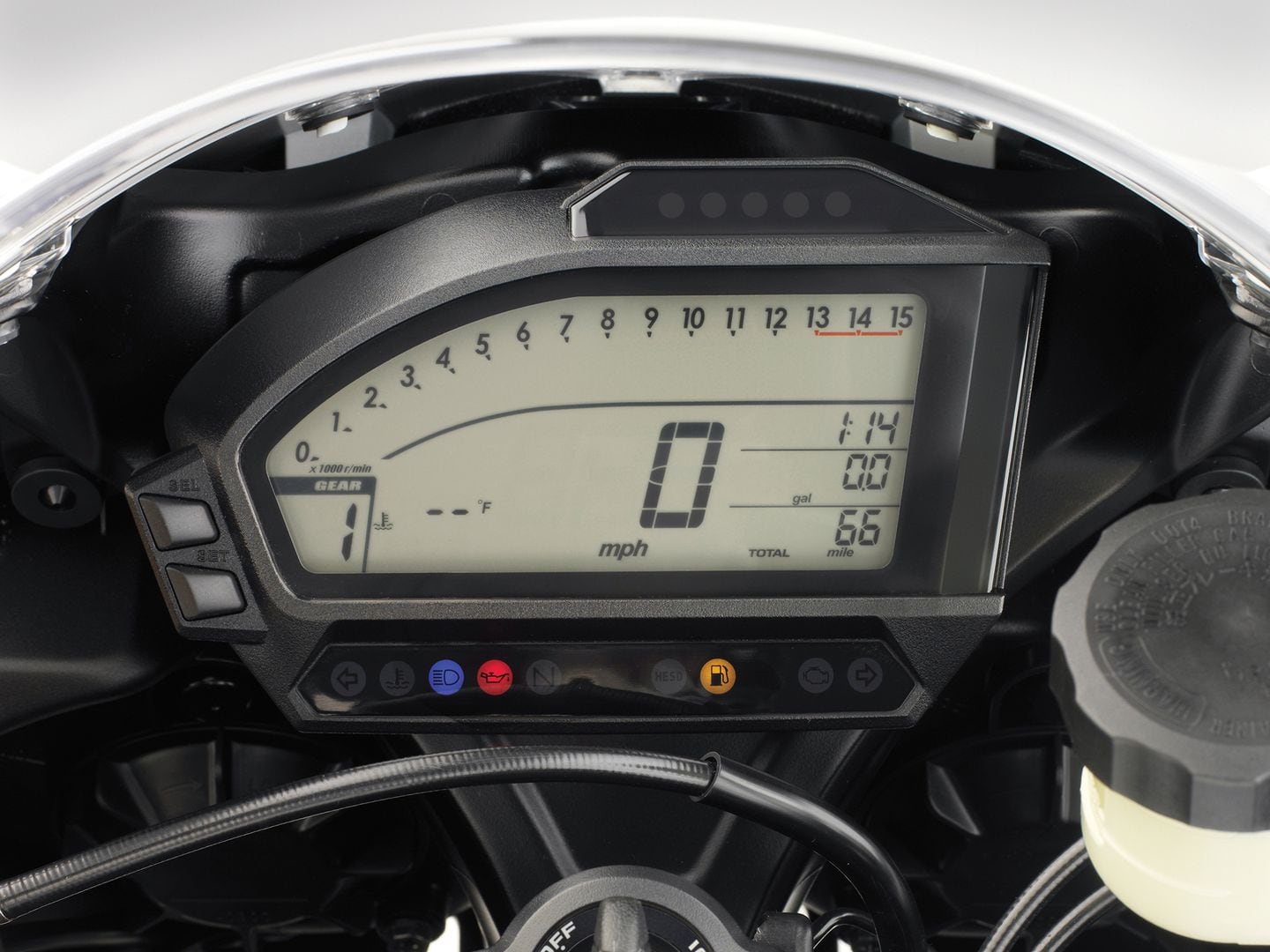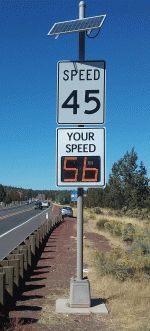You are using an out of date browser. It may not display this or other websites correctly.
You should upgrade or use an alternative browser.
You should upgrade or use an alternative browser.
Speed Accuracy
- Thread starter rongrimes
- Start date
DrCohen
Active member
I've checked the speedo on my 2020 C650GT in a variety of ways, including radar signs. It is consistently from 1 to 2 MPH high at any speed.
The speedo on my 2020 Toyota Camry is consistently 1 MPH high.
My 2011 Burgman 650, on the other hand, had a percentage error-- about 108% high at any speed.
The speedo on my 2020 Toyota Camry is consistently 1 MPH high.
My 2011 Burgman 650, on the other hand, had a percentage error-- about 108% high at any speed.
Riding Foo
New member
I think it's a BMW idiosyncracy. I have had 6 BMW cars, 2 BMW motorcycles, and now a 650 GT. EVERY single one of the speedometers reflected 2-3 mph over. For comparison I used the ones offered like in your picture, only one offered by my local friendly PD, and the one on my GPS. I think BMW wants us to think that we're going faster then we are.I have noticed pretty consistently that my CE-04 shows a speed 2-3 mph faster than what the radar speed sign shows. Anyone else notice something similar?
Example of radar speed sign just so everyone knows what I'm talking about.
View attachment 4031
DrCohen
Active member
Think about this from the viewpoint of a vehicle manufacturer. If a driver believes they're going exactly at the speed limit, and a cop measures them faster, they're going to be pretty cheesed off at the manufacturer. They may even have a case for a civil suit. So the manufacturer wants the speedo to read never below the actual speed. Since it is impossible to guarantee that the speedo will always be precisely accurate, the manufacturer builds in a safety margin of 1 to 3 MPH.I have noticed pretty consistently that my CE-04 shows a speed 2-3 mph faster than what the radar speed sign shows. Anyone else notice something similar?
Example of radar speed sign just so everyone knows what I'm talking about.
View attachment 4031
wspollack
Active member
Hey, folks, I'm not really sure how to say this without seeming snarky, or a jerk, or a know-it-all, etc., but haven't most of us ridden assorted bikes before? Put another way, this is not a new phenomenon, nor is it restricted to Beemers, or Bimmers, or just bikes, or just cars and bikes, etc. This sort of discussion has been going on for decades now.
First, there are European, US, and other area regulations that govern this. Typically, the specifications allow a percentage overage, and then an additional fudge factor on top of that. For openers, you might want to read this brief section in Wikipedia about this:

 en.wikipedia.org
en.wikipedia.org
Here are a few layman-oriented articles, all pretty short, that you may find educational, or maybe just entertaining:


 www.rideapart.com
www.rideapart.com

 www.cycleworld.com
www.cycleworld.com
And you're certainly welcome to search out the actual regs (some of which are linked to in the Wikipedia article's footnotes), do your own research, etc.
Typically, bikes are driven by the European regs, as Europe is typically the biggest market for manufacturers. Same sort of thing applies to the emission requirements we are all generally subject to, i.e., the strictest common denominator.
Bottom line: pretty much ALL bikes and ALL cars have speedos that read high. None are supposed to ever read low. And it's rare to have one read dead nuts on.
I am very skeptical when anyone says such-and-such speedo is X mph off. It is, in my experience and my research, almost always X % off. So for those folks who assert the former, I would suggest that you double-check your results, at greatly different speeds.
Let's take a real-world example. Suppose your speedo reads 3% high (which, in my experience, is typical of cars I've owned, from everything from a Camry to a Macan). If you're going a real 40 mph, the speedo will read 41 ... just a 1 mph difference. If you're going a real 70 mph, the speedo will read 72 ... which is a 2 mph difference, and hence easier to notice.
In terms of bikes, the farthest off of the ones I've owned were both of my 650 Burgmans (an '07 and then an '08). The difference was so large, and the very large in-your-face digital speedo was so annoying to me, being that far off, that in both cases I bought SpeedoHealers (an electronic percentage-based adjuster). On both of those, with fresh tires, I set the devices to subtract 9.2 or 9.1% from the display. Those calculations were made using dedicated GPS devices, trying to hold a steady speed of 70 mph (the higher the better, as I've said, for ease of calculations), in a straight line, with a nice open view of the sky.
On a Honda Valkyrie (which I owned from 2000-2007), I added a Sigma "bicycle computer" to display my speed. The Valk was off less than the Burgmans, of course, but was still annoying (and the very small numbers on the stock speedo were hard to read anyway).
And I used to adjust that Sigma periodically, because of another issue. I mentioned "fresh tires." The reason is that even with a speedo that is dead nuts on with new tires, it will read 1% (or even slightly more) higher than reality as the tires wear. Go ahead, do the math yourselves; what you have to do is note the difference in the max -- 10/32"? 8/32"? 6/32"? -- and min -- 2/32"? -- siping depth, and compare that as a fraction of the actual radius of the tire, from the center axle to the outer tread.
In terms of real-world testing that you can see, here's a short portion of a video I made last fall on the C 400 GT. You can see what the speedo displays, and what the real speed is (and doing the math shows the speedo is reading roughly three+ percent higher than reality):
That real speed, by the way, was courtesy of a GoPro Hero 9. That camera has a stellar 18Hz GPS chip, which is a very high degree of accuracy for consumer devices (and GoPro has since replaced that, on a Hero 11 I have, with a 10Hz chip, for its better ability to connect with more satellites around the world). Typically, the GPS on a phone, the last I looked, was 1Hz (although this may have changed in the last year or two -- I don't know).
Just today, I was out performing a similar test on a month-old Royal Enfield (which had its break-in service performed yesterday). I'll get back to you on the results in a day or two, if anyone's interested.
That's the background.
As for why these regulations are in place, I haven't done enough research to offer anything definitive. I can only guess, and my first guess would be what @DrCohen has said (although the safety margin is allowed to be much larger than he posited): the avoidance of law suits, in terms of crashes, tickets, etc., i.e., so a driver or rider could never claim that because of a misleading speedo he or she was going faster than the speedo led him or her to believe.
In the case of bikes, you also have to be aware that swapping out sprockets (on chain-driven and some belt-driven bikes) is pretty common, and the manufacturers may want to take that into consideration (in terms of never displaying a speed less than reality). Or changing belt sizes on some scooters. Or the difference in different brands of tires. Or, as I've mentioned, tire wear. Or any number of similar circumstances.
First, there are European, US, and other area regulations that govern this. Typically, the specifications allow a percentage overage, and then an additional fudge factor on top of that. For openers, you might want to read this brief section in Wikipedia about this:

Speedometer - Wikipedia
Here are a few layman-oriented articles, all pretty short, that you may find educational, or maybe just entertaining:


Weekend WTF: Your Motorcycle's Speedometer Is Probably Wrong
You've probably noticed that your speedometer doesn't give you the same numbers as your other electronic devices about your speed. It happens to us, too!

Why is My Motorcycle Speedometer Wrong? | Ask the Geek
Motorcycle speedometers aren't always accurate and sometimes need proper calibration. Here's why they aren't always accurate, and how you can correct them.
And you're certainly welcome to search out the actual regs (some of which are linked to in the Wikipedia article's footnotes), do your own research, etc.
Typically, bikes are driven by the European regs, as Europe is typically the biggest market for manufacturers. Same sort of thing applies to the emission requirements we are all generally subject to, i.e., the strictest common denominator.
Bottom line: pretty much ALL bikes and ALL cars have speedos that read high. None are supposed to ever read low. And it's rare to have one read dead nuts on.
I am very skeptical when anyone says such-and-such speedo is X mph off. It is, in my experience and my research, almost always X % off. So for those folks who assert the former, I would suggest that you double-check your results, at greatly different speeds.
Let's take a real-world example. Suppose your speedo reads 3% high (which, in my experience, is typical of cars I've owned, from everything from a Camry to a Macan). If you're going a real 40 mph, the speedo will read 41 ... just a 1 mph difference. If you're going a real 70 mph, the speedo will read 72 ... which is a 2 mph difference, and hence easier to notice.
In terms of bikes, the farthest off of the ones I've owned were both of my 650 Burgmans (an '07 and then an '08). The difference was so large, and the very large in-your-face digital speedo was so annoying to me, being that far off, that in both cases I bought SpeedoHealers (an electronic percentage-based adjuster). On both of those, with fresh tires, I set the devices to subtract 9.2 or 9.1% from the display. Those calculations were made using dedicated GPS devices, trying to hold a steady speed of 70 mph (the higher the better, as I've said, for ease of calculations), in a straight line, with a nice open view of the sky.
On a Honda Valkyrie (which I owned from 2000-2007), I added a Sigma "bicycle computer" to display my speed. The Valk was off less than the Burgmans, of course, but was still annoying (and the very small numbers on the stock speedo were hard to read anyway).
And I used to adjust that Sigma periodically, because of another issue. I mentioned "fresh tires." The reason is that even with a speedo that is dead nuts on with new tires, it will read 1% (or even slightly more) higher than reality as the tires wear. Go ahead, do the math yourselves; what you have to do is note the difference in the max -- 10/32"? 8/32"? 6/32"? -- and min -- 2/32"? -- siping depth, and compare that as a fraction of the actual radius of the tire, from the center axle to the outer tread.
In terms of real-world testing that you can see, here's a short portion of a video I made last fall on the C 400 GT. You can see what the speedo displays, and what the real speed is (and doing the math shows the speedo is reading roughly three+ percent higher than reality):
That real speed, by the way, was courtesy of a GoPro Hero 9. That camera has a stellar 18Hz GPS chip, which is a very high degree of accuracy for consumer devices (and GoPro has since replaced that, on a Hero 11 I have, with a 10Hz chip, for its better ability to connect with more satellites around the world). Typically, the GPS on a phone, the last I looked, was 1Hz (although this may have changed in the last year or two -- I don't know).
Just today, I was out performing a similar test on a month-old Royal Enfield (which had its break-in service performed yesterday). I'll get back to you on the results in a day or two, if anyone's interested.
That's the background.
As for why these regulations are in place, I haven't done enough research to offer anything definitive. I can only guess, and my first guess would be what @DrCohen has said (although the safety margin is allowed to be much larger than he posited): the avoidance of law suits, in terms of crashes, tickets, etc., i.e., so a driver or rider could never claim that because of a misleading speedo he or she was going faster than the speedo led him or her to believe.
In the case of bikes, you also have to be aware that swapping out sprockets (on chain-driven and some belt-driven bikes) is pretty common, and the manufacturers may want to take that into consideration (in terms of never displaying a speed less than reality). Or changing belt sizes on some scooters. Or the difference in different brands of tires. Or, as I've mentioned, tire wear. Or any number of similar circumstances.
Last edited:
DrCohen
Active member
Two things to bear in mind with a GPS speedometer are lag and loss of signal. Depending on the sampling rate and computation algorithm, a GPS speedo may lag as much as several seconds when actual speed changes. And, of course, its behavior when the satellite signal is weak or absent is unpredictable. OTOH, a speedo connected to the bike's wheel may be biased by a percentage and/or by a fixed amount, but for practical purposes that bias is always the same, and for practical purposes it is real-time with no lag. E.g., If you must subtract 5% and then subtract 2 MPH to convert your speedo reading to true speed, then you can always trust that correction.Hey, folks, I'm not really sure how to say this without seeming snarky, or a jerk, or a know-it-all, etc., but haven't most of us ridden assorted bikes before? Put another way, this is not a new phenomenon, nor is it restricted to Beemers, or Bimmers, or just bikes, or just cars and bikes, etc. This sort of discussion has been going on for decades now.
First, there are European, US, and other area regulations that govern this. Typically, the specifications allow a percentage overage, and then an additional fudge factor on top of that. For openers, you might want to read this brief section in Wikipedia about this:

Speedometer - Wikipedia
en.wikipedia.org
Here are a few layman-oriented articles, all pretty short, that you may find educational, or maybe just entertaining:


Weekend WTF: Your Motorcycle's Speedometer Is Probably Wrong
You've probably noticed that your speedometer doesn't give you the same numbers as your other electronic devices about your speed. It happens to us, too!www.rideapart.com

Why is My Motorcycle Speedometer Wrong? | Ask the Geek
Motorcycle speedometers aren't always accurate and sometimes need proper calibration. Here's why they aren't always accurate, and how you can correct them.www.cycleworld.com
And you're certainly welcome to search out the actual regs (some of which are linked to in the Wikipedia article's footnotes), do your own research, etc.
Typically, bikes are driven by the European regs, as Europe is typically the biggest market for manufacturers. Same sort of thing applies to the emission requirements we are all generally subject to, i.e., the strictest common denominator.
Bottom line: pretty much ALL bikes and ALL cars have speedos that read high. None are supposed to ever read low. And it's rare to have one read dead nuts on.
I am very skeptical when anyone says such-and-such speedo is X mph off. It is, in my experience and my research, almost always X % off. So for those folks who assert the former, I would suggest that you double-check your results, at greatly different speeds.
Let's take a real-world example. Suppose your speedo reads 3% high (which, in my experience, is typical of cars I've owned, from everything from a Camry to a Macan). If you're going a real 40 mph, the speedo will read 41 ... just a 1 mph difference. If you're going a real 70 mph, the speedo will read 72 ... which is a 2 mph difference, and hence easier to notice.
In terms of bikes, the farthest off of the ones I've owned were both of my 650 Burgmans (an '07 and then an '08). The difference was so large, and the very large in-your-face digital speedo was so annoying to me, being that far off, that in both cases I bought SpeedoHealers (an electronic percentage-based adjuster). On both of those, with fresh tires, I set the devices to subtract 9.2 or 9.1% from the display. Those calculations were made using dedicated GPS devices, trying to hold a steady speed of 70 mph (the higher the better, as I've said, for ease of calculations), in a straight line, with a nice open view of the sky.
On a Honda Valkyrie (which I owned from 2000-2007), I added a Sigma "bicycle computer" to display my speed. The Valk was off less than the Burgmans, of course, but was still annoying (and the very small numbers on the stock speedo were hard to read anyway).
And I used to adjust that Sigma periodically, because of another issue. I mentioned "fresh tires." The reason is that even with a speedo that is dead nuts on with new tires, it will read 1% (or even slightly more) higher than reality as the tires wear. Go ahead, do the math yourselves; what you have to do is note the difference in the max -- 10/32"? 8/32"? 6/32"? -- and min -- 2/32"? -- siping depth, and compare that as a fraction of the actual radius of the tire, from the center axle to the outer tread.
In terms of real-world testing that you can see, here's a short portion of a video I made last fall on the C 400 GT. You can see what the speedo displays, and what the real speed is (and doing the math shows the speedo is reading roughly three+ percent higher than reality):
That real speed, by the way, was courtesy of a GoPro Hero 9. That camera has a stellar 18Hz GPS chip, which is a very high degree of accuracy for consumer devices (and GoPro has since replaced that, on a Hero 11 I have, with a 10Hz chip, for its better ability to connect with more satellites around the world). Typically, the GPS on a phone, the last I looked, was 1Hz (although this may have changed in the last year or two -- I don't know).
Just today, I was out performing a similar test on a month-old Royal Enfield (which had its break-in service performed yesterday). I'll get back to you on the results in a day or two, if anyone's interested.
That's the background.
As for why these regulations are in place, I haven't done enough research to offer anything definitive. I can only guess, and my first guess would be what @DrCohen has said (although the safety margin is allowed to be much larger than he posited): the avoidance of law suits, in terms of crashes, tickets, etc., i.e., so a driver or rider could never claim that because of a misleading speedo he or she was going faster than the speedo led him or her to believe.
In the case of bikes, you also have to be aware that swapping out sprockets (on chain-driven and some belt-driven bikes) is pretty common, and the manufacturers may want to take that into consideration (in terms of never displaying a speed less than reality). Or changing belt sizes on some scooters. Or the difference in different brands of tires. Or, as I've mentioned, tire wear. Or any number of similar circumstances.
wspollack
Active member
1) I think we can now agree that:
- Speedometers are configured such that the intent is that they never display a speed less than the actual speed;
- In the vast majority of cases the speedometers read higher than the actual speed, and quite often the difference is surprisingly (but legally) large;
- The above statements refer to all manner and brands of bikes, cars, and trucks.
2) Now, whether that overrun is percentage-based, or a fixed amount, or some combination of the two is another matter.
As it happens, I performed a more rigorous test this morning, intended to determine just that, on a month-old Royal Enfield Meteor 350.
As it turns out -- yes, much to my surprise -- it looks like that bike has, for most of its speed range, at least -- a speedometer overrun of a fixed amount. In this particular case, it looks like a 3-mph overrun. Stop the video at different points (e.g., when the stock display is in the middle of two digits -- say, between the 5 and 0 of 50 -- which is where the "dots" are) and draw your own conclusions:
(If you click on the "more" link in the description, you can read about my methodology.)
I plan on performing a nearly identical test, but with the C 400 GT, later this season.
- Speedometers are configured such that the intent is that they never display a speed less than the actual speed;
- In the vast majority of cases the speedometers read higher than the actual speed, and quite often the difference is surprisingly (but legally) large;
- The above statements refer to all manner and brands of bikes, cars, and trucks.
2) Now, whether that overrun is percentage-based, or a fixed amount, or some combination of the two is another matter.
As it happens, I performed a more rigorous test this morning, intended to determine just that, on a month-old Royal Enfield Meteor 350.
As it turns out -- yes, much to my surprise -- it looks like that bike has, for most of its speed range, at least -- a speedometer overrun of a fixed amount. In this particular case, it looks like a 3-mph overrun. Stop the video at different points (e.g., when the stock display is in the middle of two digits -- say, between the 5 and 0 of 50 -- which is where the "dots" are) and draw your own conclusions:
(If you click on the "more" link in the description, you can read about my methodology.)
I plan on performing a nearly identical test, but with the C 400 GT, later this season.
Last edited:

